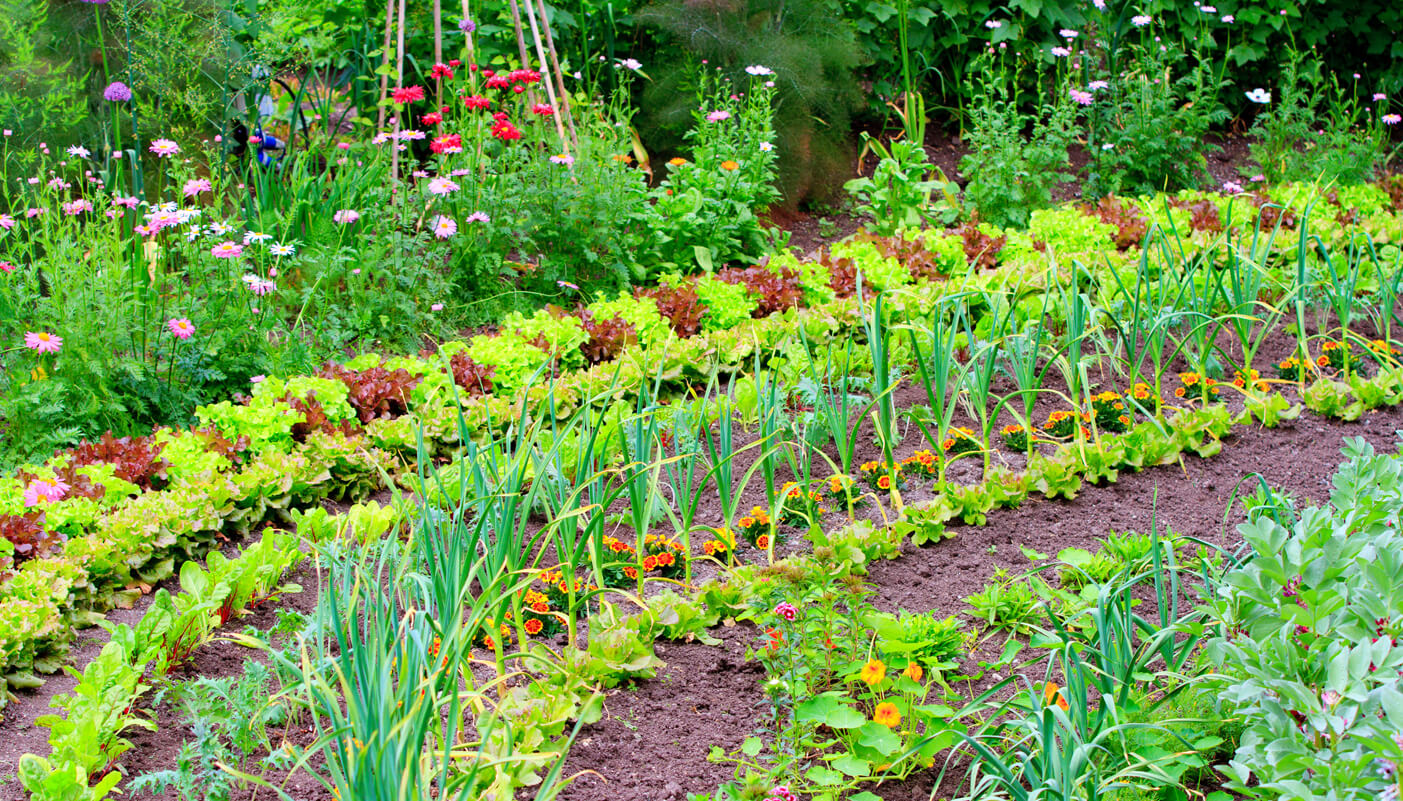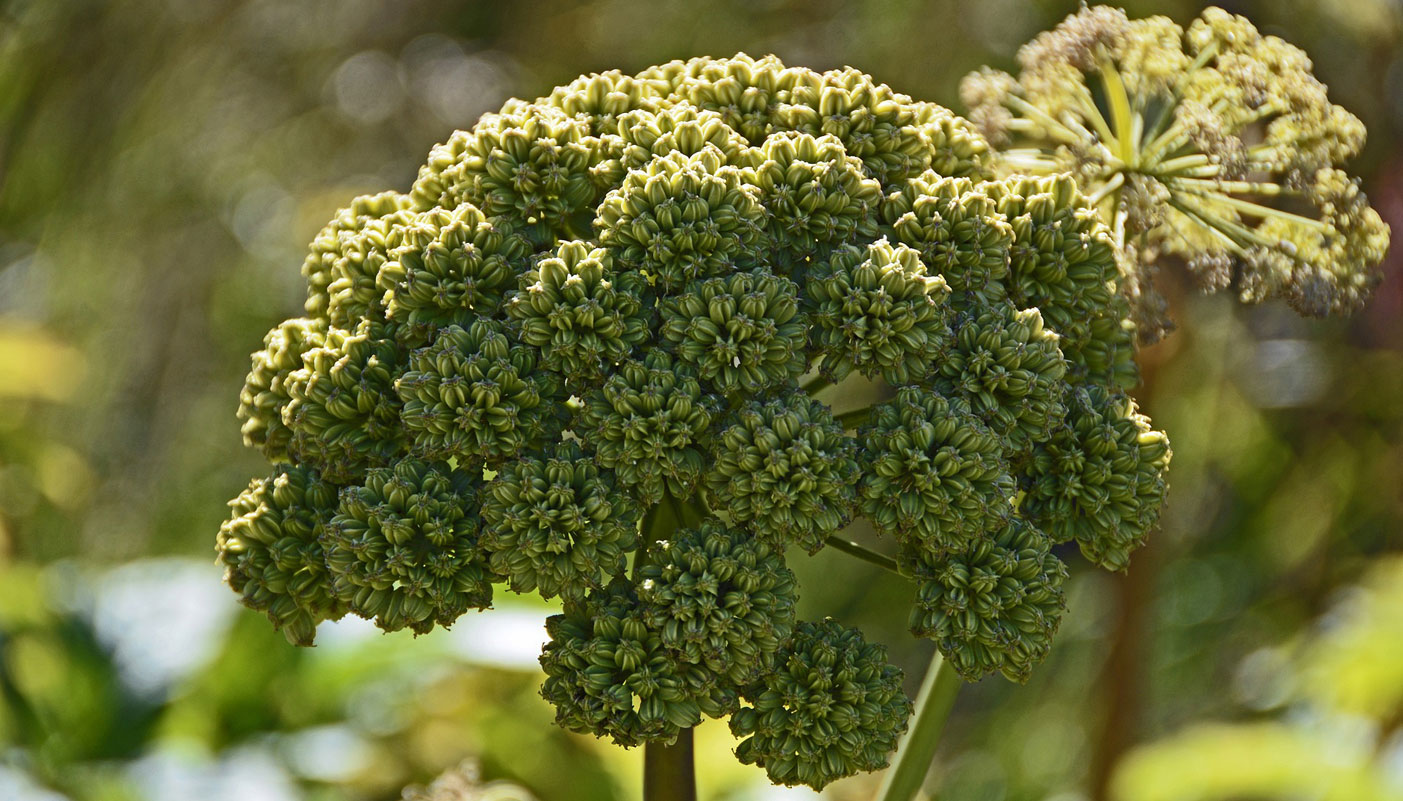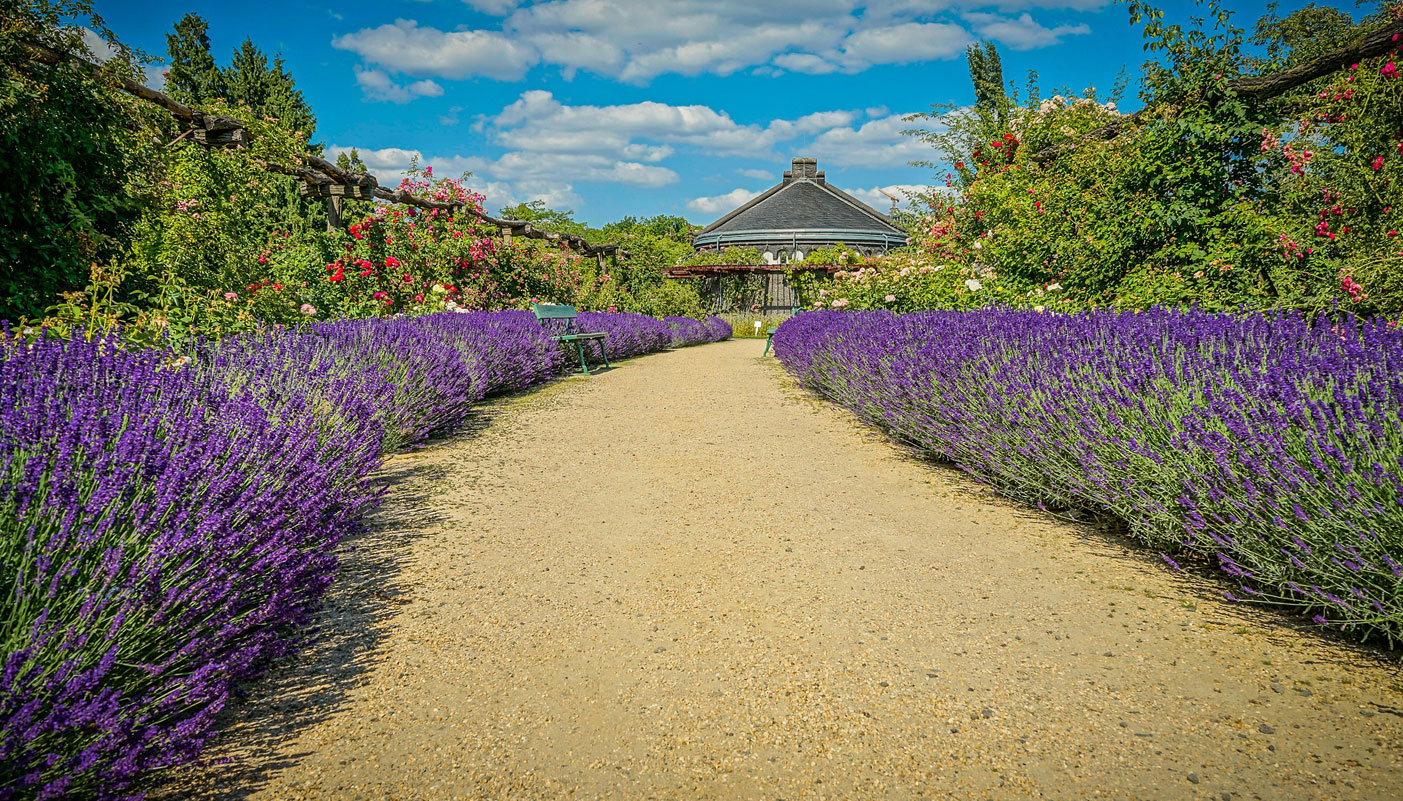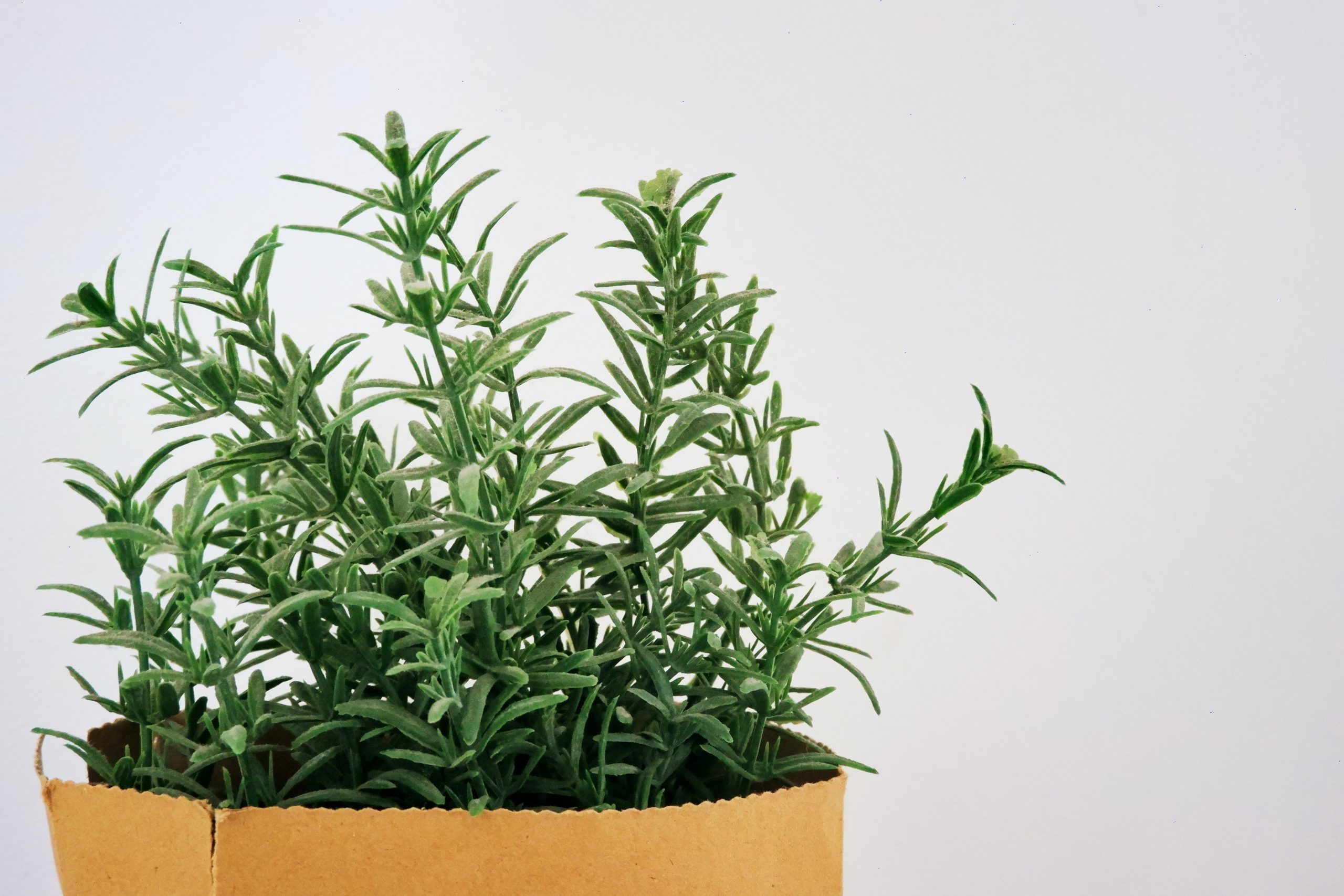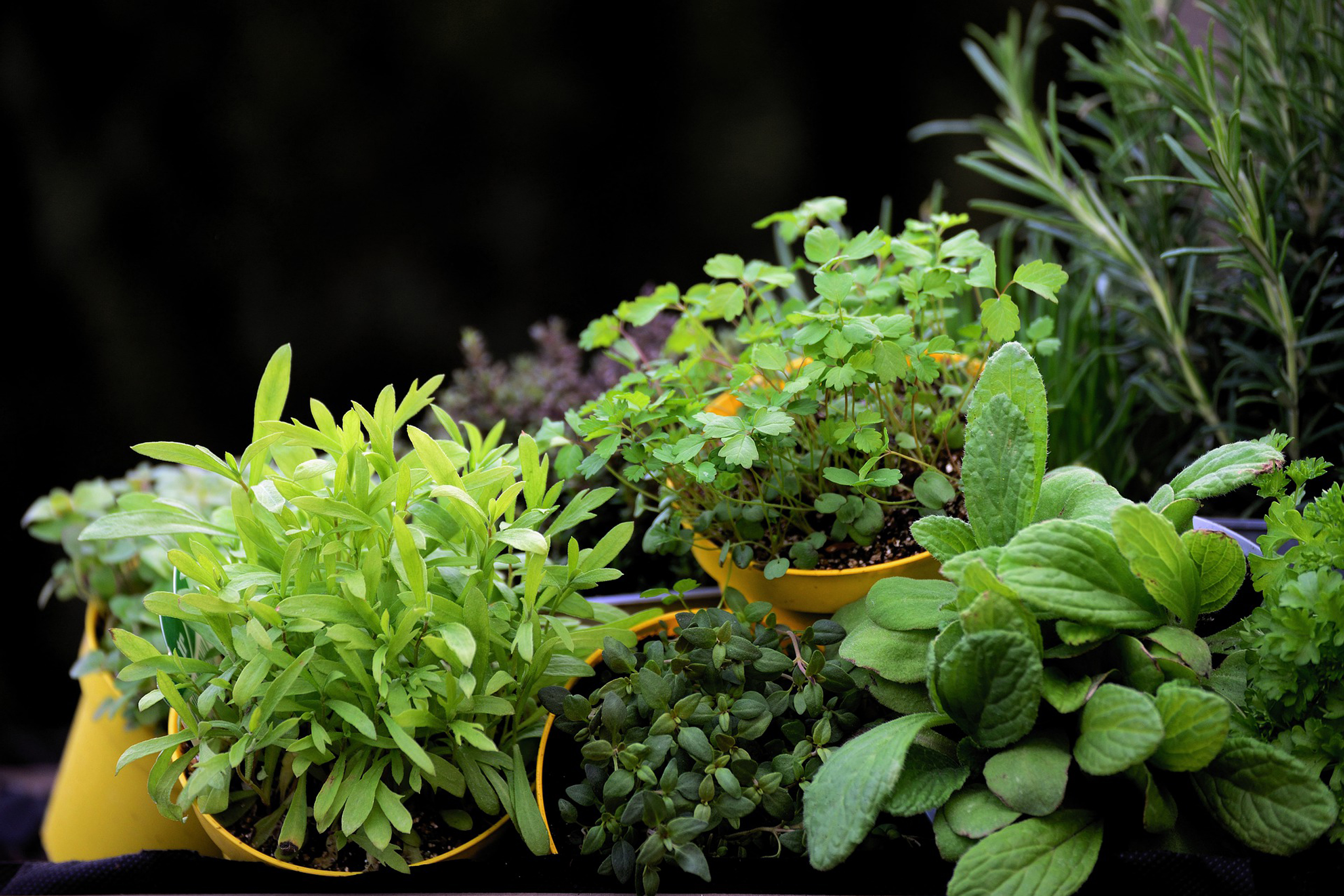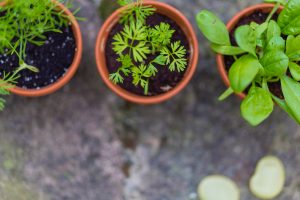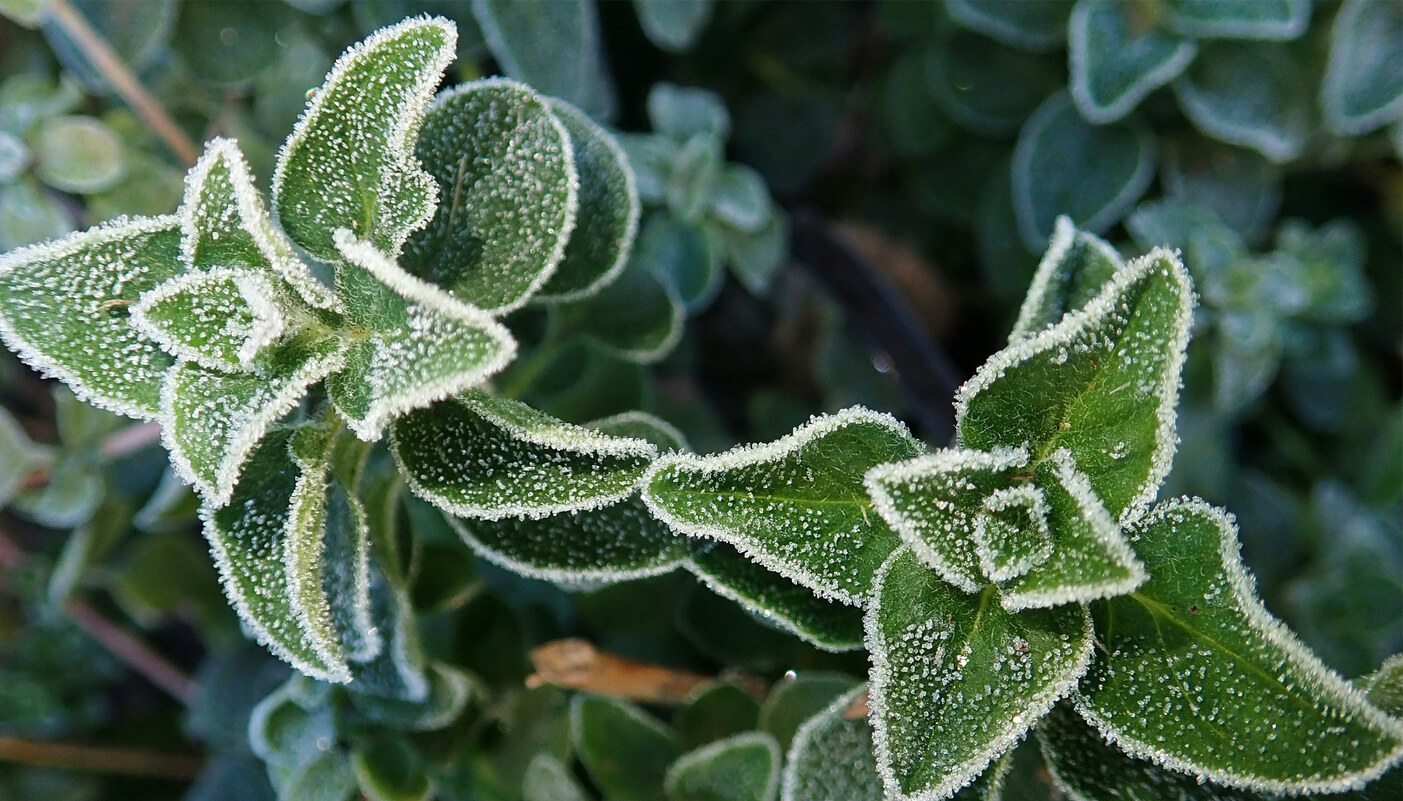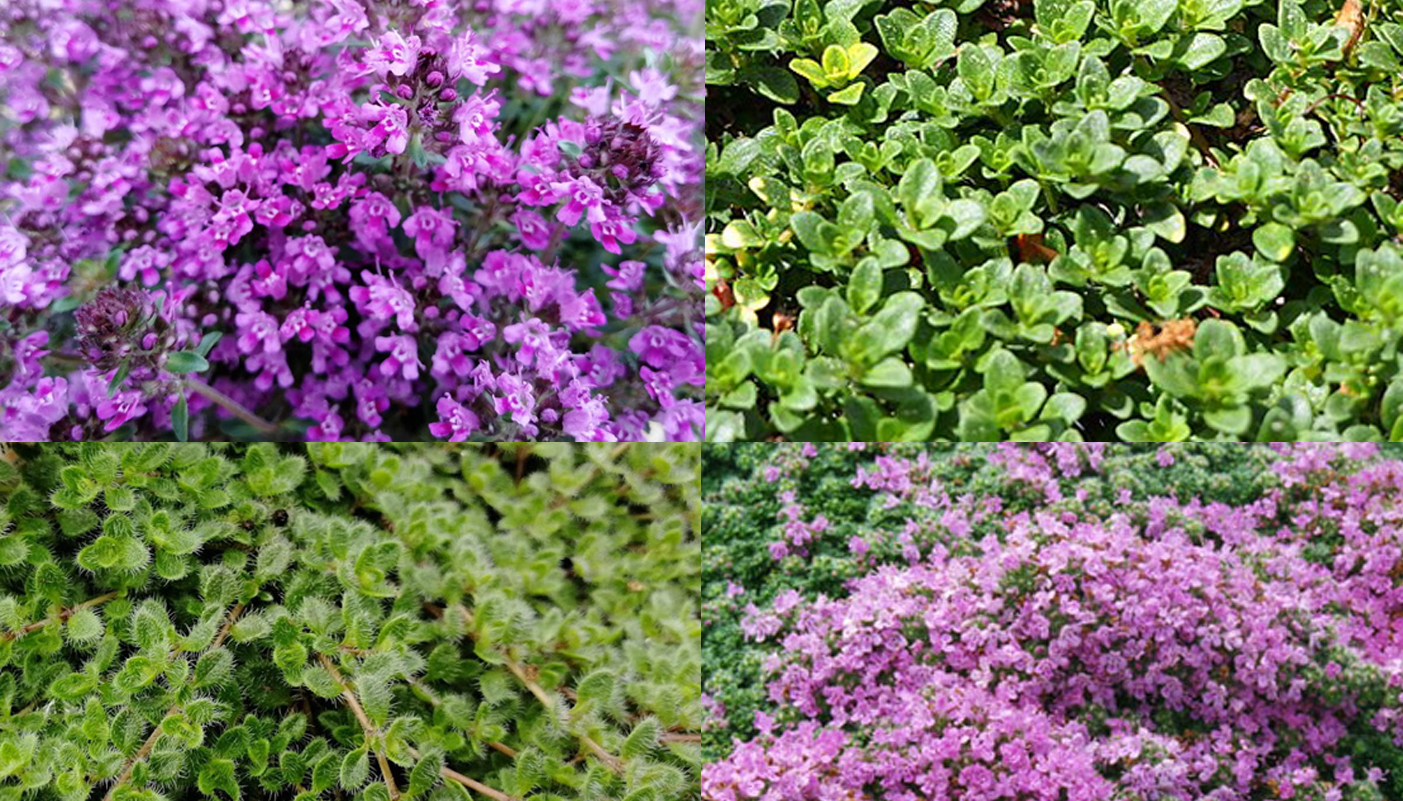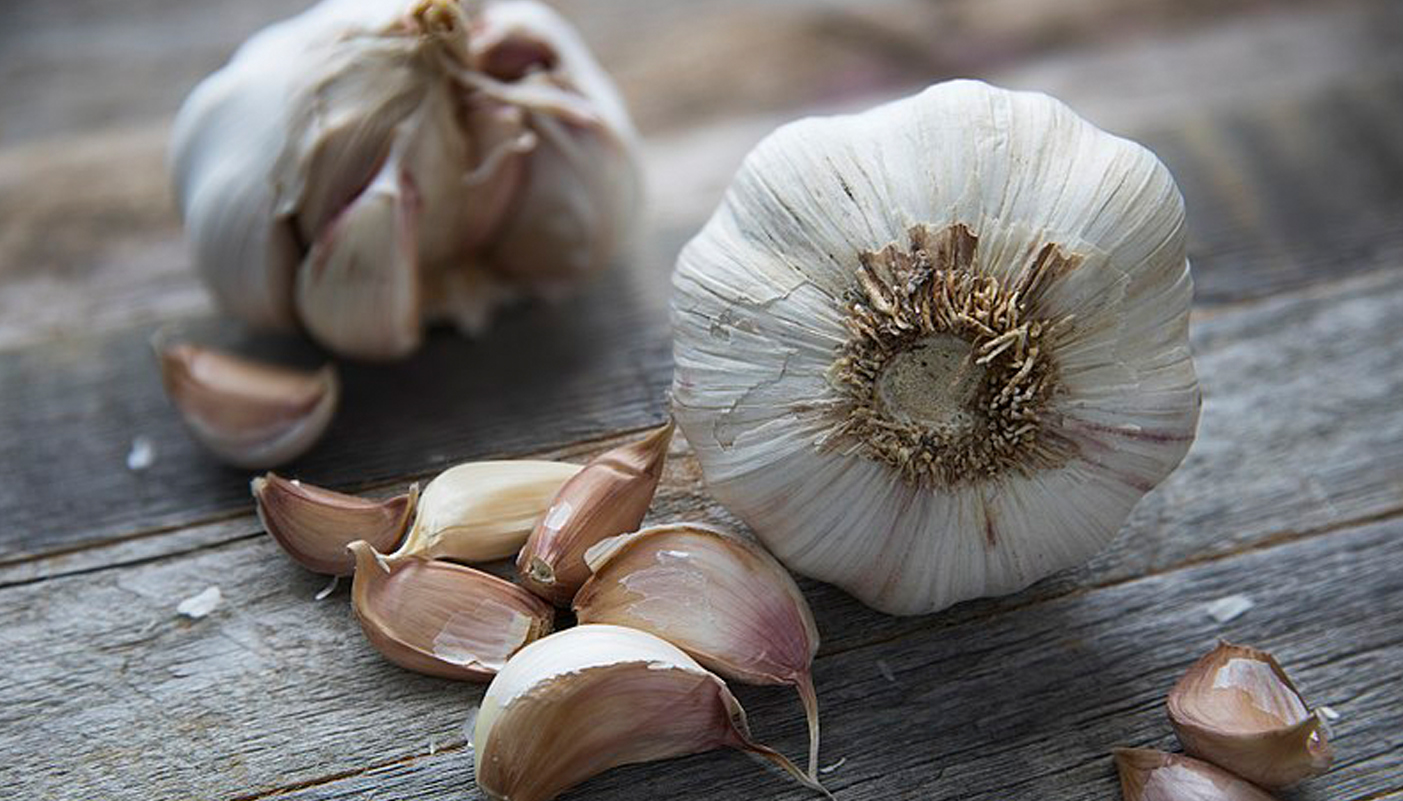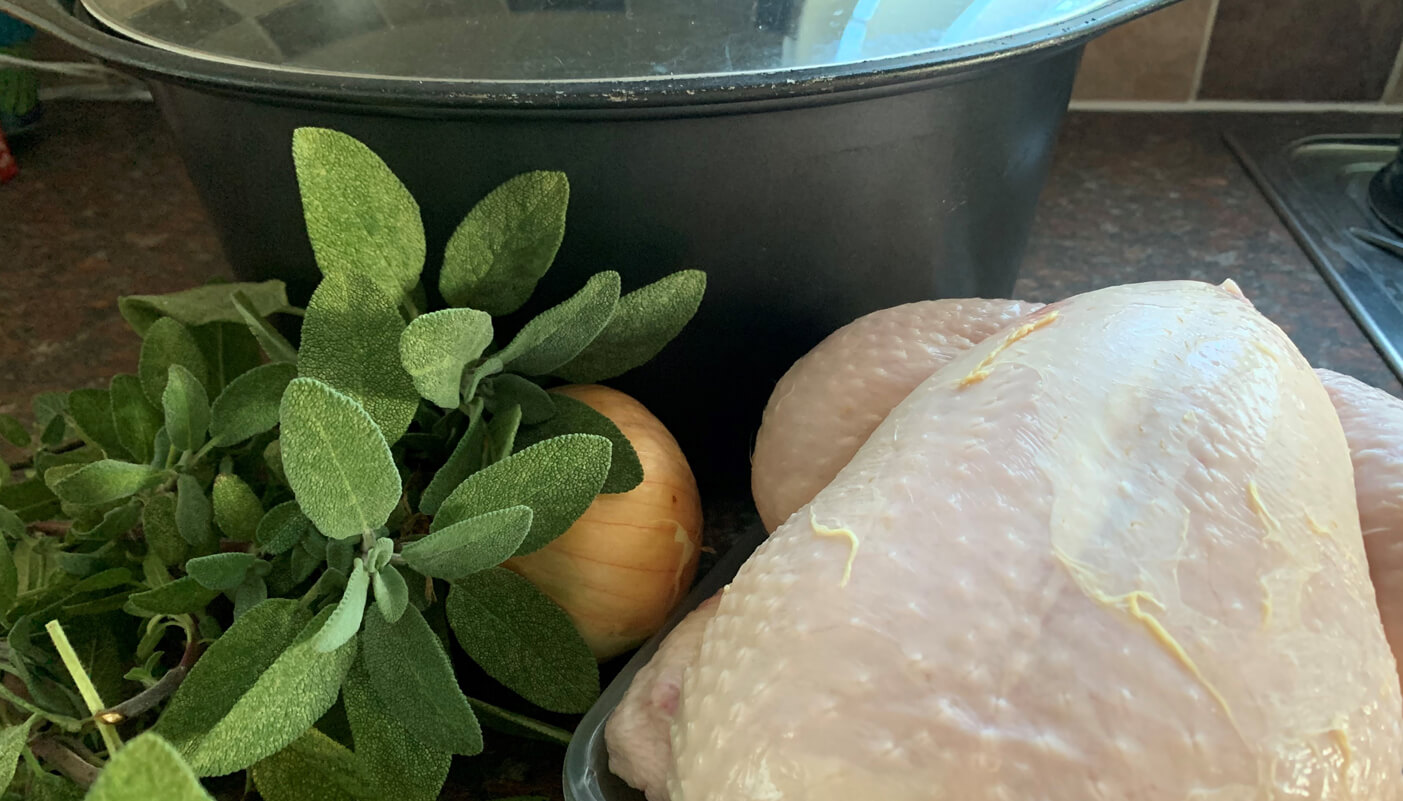Herbs are perfect for indoor growing. They can make a stunning kitchen garden with the use of just a few pots on your windowsill. One of the greatest benefits of growing herbs indoors is the delicious aroma that they’ll give your home. Growing indoors also means that you can grow all year round, meaning you’ll have fresh herbs on hand whenever you need them.
Many herbs thrive indoors with minimal care. Some herbs will need a little extra maintenance in terms of space and temperature control. The main considerations are sunlight, water level and positioning. We have some handy tips to help you start your own indoor herb garden.
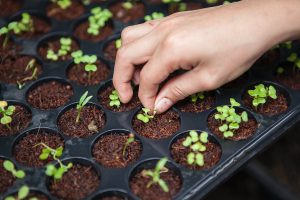
Perfect Positioning For Indoor Herb Gardens
To ensure you have the healthiest and tastiest herbs, positioning is key. Make sure you have a sunny windowsill, south-facing ideally, where your herbs will get at least 6 hours of sun a day. Make sure this is also draft-free as many herbs dislike draughty conditions.
If you don’t have a sunny windowsill you can use a grow light. These will need to be placed close to the plants and be on for around 10 hours as they’re not as strong as natural light. If placed above seeds, these lights need to be really close at around 2-3 inches and raised gradually as the seedlings emerge and grow. Laidback Gardener has a great guide on the use of grow lights.
The Best Herbs For Growing Indoors
Some herbs are better than others for growing indoors. Generally speaking, herbs that don’t grow very wide or very tall are best. Basil, Chives, Mint, Parsley, Rosemary, and Thyme are good choices and offer a good variety of flavours for a number of dishes. Although a popular herb, Coriander is often preferred to be grown outdoors as its smell can be a little overpowering.
Herbs can be purchased as established plants, nursery plants or seed packets. Starting from seed is relatively inexpensive but does require more attention. Starting from seed can be satisfying but it will be several months before you have usable herbs.
Setting Up Herb Garden Containers For Seeds
When starting herb seeds, first fill a container with dampened seed-starting mix to about 1 inch from the rim. Sprinkle seeds on top of the soil, well-spaced and cover them lightly. Pat down gently but keep the soil fairly loose. Cover your container with a clear plastic bag or specialist dome to retain moisture and increase humidity.
Ensure the soil is kept moist until you see the seedlings poking through. At that point, remove your cover and continue watering to keep the soil lightly moist but not wet. Make sure the seedlings are getting plenty of sunlight. Turn their container daily, so that they grow straight. Once your seedlings are around 2-4 inches you can move them gently into a larger container or split them amongst smaller pots.
Setting Up Herb Garden Containers For Plants
When starting with young (Otherwise known as nursery plants), you’ll need a pot or container that is at least 6 to 12 inches wide and deep. Depending on both their size once they mature and their individual needs, you may be able to plant multiple herbs in one larger container. Your pot should have drainage holes and a saucer to catch excess water.
You’ll need to use a quality potting mix that’s appropriate to your chosen herbs. Start by adding a few inches of potting mix to the bottom of the pot. Then, gently remove the plant from its original pot and carefully loosen the roots. Place the plant in the new container and finish by filling it around the plant with your compost or soil. Lightly pat the soil until firm but not compacted. You should water lightly after planting to help your plant settle.
Caring For Your Indoor Herbs
Each of your herbs have different water needs, so you’ll need to make sure to check what your chosen herbs require. As a rule, most herbs don’t like to sit in very wet soil. If water accumulates on the saucer, drain immediately. It’s important to note that potted plants dry out more quickly than those grown directly in the ground. Dry indoor air can also increase your plant’s watering requirements.
You’ll quickly get used to how much water each requires and when. A good way to gauge your plant’s needs is to water until the excess starts to drain out of the bottom of the container. Try to avoid repeatedly giving your indoor plants small amounts of water. When watering until the excess drains away, you can be sure that any salts from the water don’t build up in the soil. You’ll notice salt building if a white film appears on the outside of your pots.
Each herb will also have varying fertiliser needs. Ensure you choose a fertiliser specifically for edible plants. Too much fertiliser or adding too often can lead to wispy plants or very delicate leaves. Likewise, if you notice your plants are struggling to gain any real growth traction, add a little more. You also will need to adjust your fertiliser timings and amounts with the seasons. Herbs in general will grow much more slowly in the winter months than in the summer and therefore, will require much less food during this time.
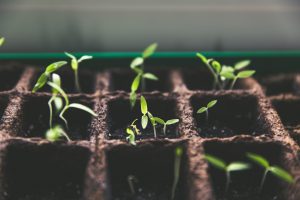
When To Use Indoor Herbs
You’ll need to allow your plants some time to acclimatise to their new home. For seedlings, you can start to harvest them once they reach around 6 inches tall. For nursery plants, you can start using them once you see new growth. Always use good snipping tools to protect your plant’s stems. For most herbs, you should gently cut 2 to 3 inches from the tips as needed. This will also encourage more lush growth.
For certain herbs, such as parsley and chives, you can snip the entire stem from the outside of the plants. In this case, any new growth will start to fill the plant back out. Be mindful to never take more than a third of your plant’s foliage at any one time. Harvesting more than this can stress the plant and cause it to deteriorate.
Finally enjoy the fruits of your labour by adding them to your favourite dishes or use the chance to discover and try out new recipes. The addition of just one new herb can offer a wealth of new flavours to the food you love. Sign up for our newsletter for all the latest news, growing tips, recipes and of course, special offers.







